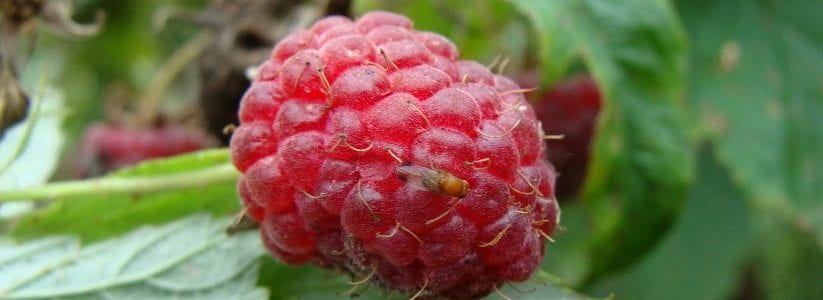Strawberry renovation is a critical, but often overlooked part of growing June bearing strawberries. This year, with SWD numbers climbing, it’s even more important to remove fruit leftover in the field as quickly as possible. Otherwise, this fruit can serve as a food and reproductive resource for SWD population growth.
The task that creates a lag in the renovation process is the 2,4-D application. Most growers want to apply this herbicide all at once, so early berries are forced to wait weeks for the late varieties to finish — and in the case of ‘Malwina’, growers could delay renovation for more than a month. This tactic leaves a continuous supply of unharvested, cull fruit that SWD can develop in. A further delay is due to 2,4-D needing to be taken up by the leaves — mowing is delayed for 5 days to allow the weeds to absorb the herbicide. Given this added delay from choosing 2,4-D, growers need to make sure the weed species in their field are vulnerable to 2,4-D. If not, don’t delay renovation to use an ineffective herbicide, choose an alternate herbicide, and mow the planting as soon as picking is finished.

Whenever possible, mow the variety as soon as harvest is done. CAUTION: Be aware that mowing a water- or heat-stressed field can result in poor re-growth and plant death. Therefore, make sure the plants are well watered in the two weeks prior to mowing. They should have received two inches of rain, about an inch per week, in the two weeks prior to mowing to insure good regrowth. If temperatures are above 90 degrees and you cannot irrigate, mowing should be delayed. If irrigation is not possible, consider skipping the mowing — but still renovate by narrowing the rows and throwing some soil up over existing crowns.
When strawberry fields go out of the rotation, remove them from production as soon as possible by tilling and then seeding a cover crop or a late season vegetable. If you cannot till the field, then mow it close to the crown or cultivate aggressively to help crush and dry down the remaining berries. This will help destroy this resource and limit SWD population growth in the remnant fruit.
Renovation Process – Immediately after Harvest is Finished
1. Ensure the field has adequate soil moisture, 2 inches of rain or irrigation in the prior two weeks.
2. Apply 2,4-D if needed.
3. Wait 5 days after 2,4-D is applied to mow. If 2,4-D is not used, mow immediately after picking.
4. Fertilize.
5. Narrow the rows, cultivate middles of wide rows. Throw ½” of soil over remaining crowns.
6. Apply pre-emergent herbicide (ie Sinbar – make sure to read labels as some varieties are sensitive).
7. Irrigate.
For more in-depth information re: strawberry renovation, visit http://www.hort.cornell.edu/fruit/nybn/newslettpdfs/2014/nybn1306.pdf.
This post was written by Laura McDermott and Juliet Carroll, Cornell Cooperative Extension.

